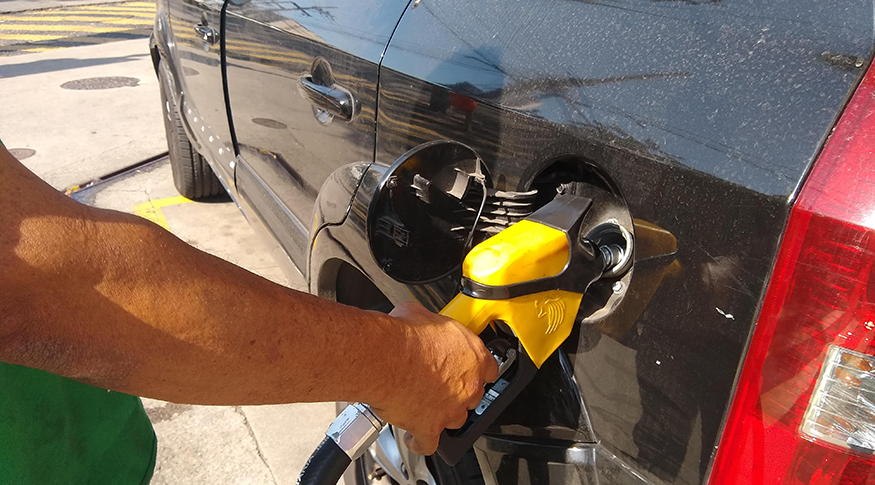
With the continued fall in fuel prices, the Extended National Consumer Price Index (IPCA) was -0.36% in August, the second consecutive month of deflation. The fall was less intense than that registered in July (-0.68%), when the rate was the lowest since the beginning of the survey's time series, in January 1980. In the year, the accumulated inflation is 4.39 % and, in the last 12 months, 8.73%. The data were released today (Sept 9) by the IBGE.
“Some factors explain the smaller drop than in July. One of them is the less sharp reduction of electricity (-1.27%), which had been 5.78% in the previous month, as a consequence of the reduction in the ICMS rates. There was also reduction tin some groups, as health and personal care (1.31%) and wearing apparel (1.69%) and the less intense drop in transportation in August. In the previous month, gasoline prices , with the greatest weight in the group, had fallen 15.48% and in August the retraction was lower (-11.64%)”, explains survey manager Pedro Kislanov.
The Transportation group (-3.37%) exerted the greatest negative impact on the general index, contributing with 0.72 percentage points (pp). The decrease in this group was influenced mainly by the retraction in the prices of fuels (-10.82%). In August, the four surveyed fuels had deflation: vehicular gas (-2.12%), diesel fuel (-3.76%), ethanol (-8.67%) and gasoline (-11.64%). Gasoline, as the major impact on the general index, had a R$0.18 reduction in the refineries last month.
Airfares also dropped in August (-12.07%), after four consecutive months of highs. According to the survey manager, the seasonal factor is one of the causes for such result. “This is a comparison against July, which is vacation and has an increased demand. Besides, the four months of high in a row increases the basis for comparison. There is also the impact of the reduction of the aviation kerosene in the period”.
In Housing (0.10%), prices of household electricity (-1.27%) continued falling, but less significantly than in the previous month (-5.78%). “The effects of the reduction of electricity rates stood were more concentrated in the previous month. Some areas, as Vitória and Belém, has also increase in the tariffs in August,” he explains.
On the other hand, the 1.31% rise in the group health and personal care is related to the increase in the personal hygiene items (2.71%) and health insurance plans (1.13%). The greatest positive change in August IPCA came from wearing apparel (1.69%), whose prices had decelerated in the previous month (0.58%). Women’s wearing apparel (1.92%), men’s wearing apparel (1.84%) footwear and accessories (1.77%) were the highest influences in the advance of the group.
Among the highs are also the prices of the groups food and beverages (0.24%) which decelerated over the previous month (1.30%). Important items for family consumption had inflation, as chicken pieces (2.87%), cheese (2.58%) and fruit (1.35%). But there was also decrease in the prices of tomatoes (-11.25%), of potatoes (-10.07%) and soybean oil (-5.56%). That made the result of food at home (0.01%) stood close to stability.
Another important product in the basket is long life milk, which had deflation of 1.78% in August. “In the last months, milk prices rose a lot. As the end of the off-season period approaches, probably ending in September or October, the situation can improve. But in the previous month, the rise of milk was of 25.46%, i. e., prices fell in August, but are still high”, says Mr. Kislanov.
Food away from home advances 0.89%, with meals rising from 0.53% in July to 0.84% in August and snacks decelerating from 1.32% to 0.86% in the period.
INPC decreases 0.31% in August
The National Consumer Price Index (INPC) had decrease 0.31% in August. In the previous month, there was also deflation in this indicator (-0.60%). The index registers a cumulative rise of 4.65% in the year and of 8.83% in the last 12 months. Food products changed from 1.31%, in July to 0.26% in August. Non-food products had a lower decrease (from a retraction fo 1.21% in July to -0.50% in August).
More about the surveys
The IPCA encompasses households with earnings between 1 and 40 minimum wages, whereas the INPC, households with earnings between 1 and 5 minimum wages, living in the Metropolitan Areas of Belém, Fortaleza, Recife, Salvador, Belo Horizonte, Vitória, Rio de Janeiro, São Paulo, Curitiba, Porto Alegre, as well as in the Federal District and in the municipalities of Goiânia, Campo Grande, Rio Branco, São Luís and Aracaju. Please access the data at Sidra.

